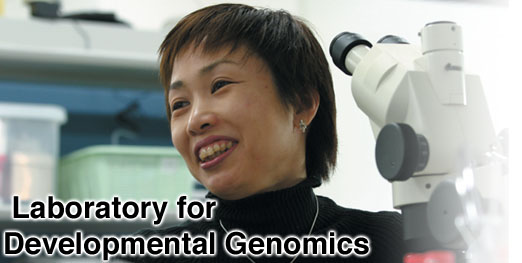




     |

The cooperation between groups of genes encoded in an organism's genome is essential to the development of complex structures from a single cell, the fertilized egg. Our laboratory has adopted the nematode Caenorhabditis elegans as an experimental model. This organism provides an extremely useful system for studying developmental programs at the whole genome level, as its genome has been fully sequenced, and the lineage of each cell in its body is known, features that we seek to exploit in identifying the means by which sets of genes working in combination help to establish and direct developmental processes. The lab also looks to take findings from these studies as a base for advancing the understanding of developmentally important mechanisms.
Our laboratory has developed a high-throughput system for interfering with gene function using RNAi, which allows us to perform comprehensive screens for individual genes and gene groups with important functions in developmental processes and to profile phenotypes resulting from their loss of function. Through the systematic analysis of phenotypes (a field of study known as phenomics), we seek to gain a more detailed understanding of how an organism's genome frames and determines the set of developmental programs that operate in the building of the body.
We are now beginning to perform live imaging and other cell biological studies of discrete sets of genes identified in our phenomics analyses as being involved in microtubule dynamics in cell division and the regulation of hypodermal cell morphology. By studies such as these, we hope to provide a more detailed picture of the regulation of dynamic processes by networks of genes.